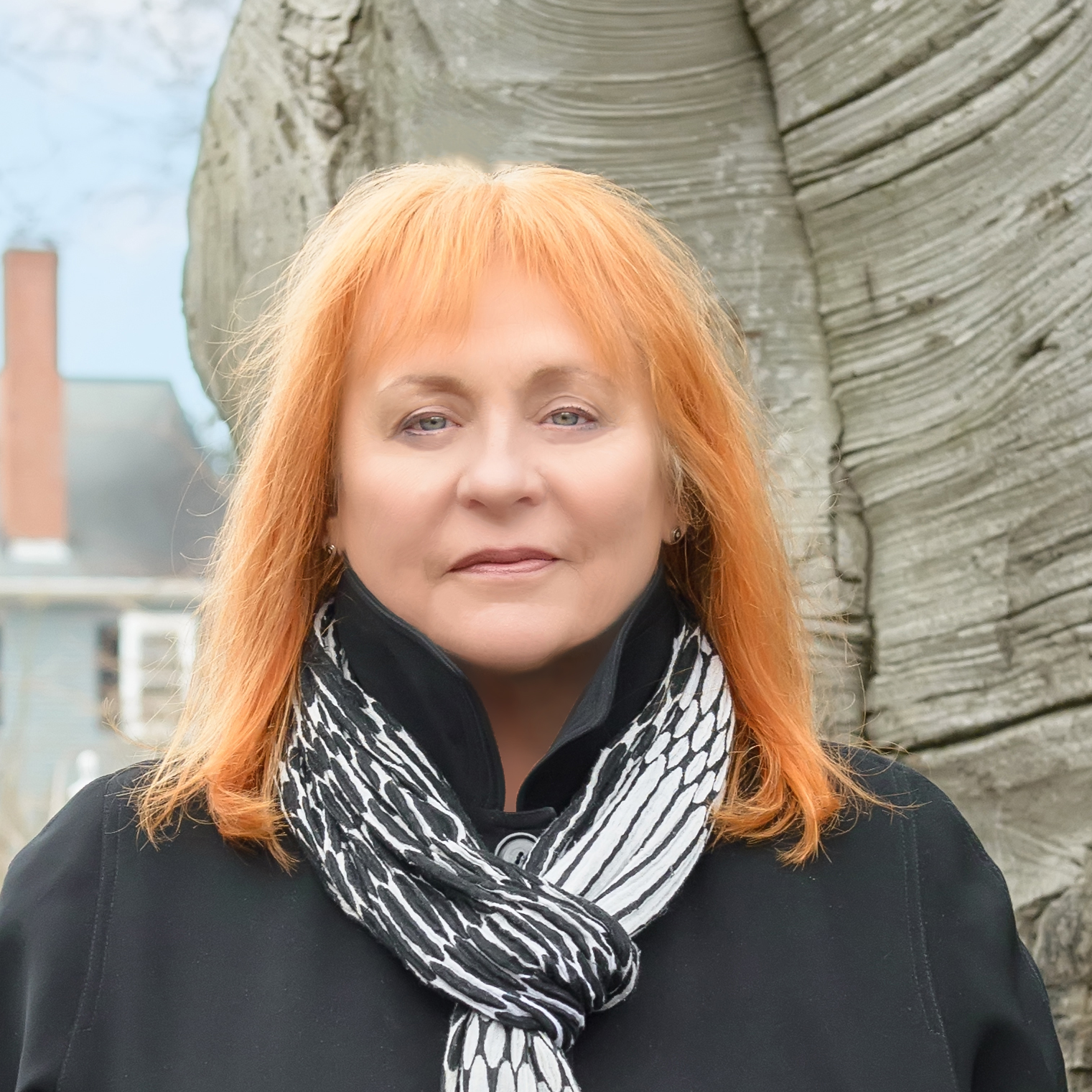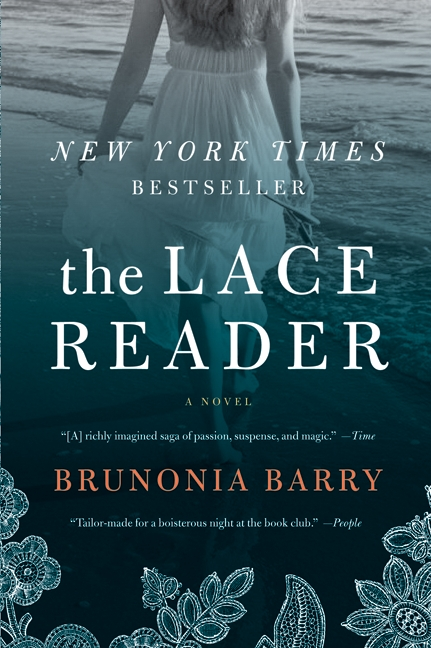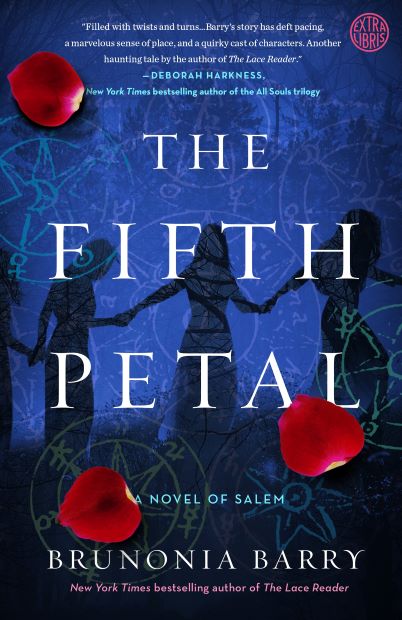A Visit with Brunonia Barry
I first met Brunonia Barry in 2008 at a reading club meeting run by a mutual friend. We discussed “The Lace Reader,” and Brunonia joined the discussion. From then on, I was a huge fan.
NG: It’s great to visit with you, Brunonia.
BB: So glad to be asked, Nancy. Nice to connect with you again.
NG: Salem, aka Witch City, is known for its exuberant Halloween partying. As a Salem resident, do you participate in the festivities or do you hide?
BB: This year, I have to admit I’m in hiding. Though Haunted Happenings has been cancelled, and most October events aren’t happening, huge crowds are still arriving. In a normal year, I embrace the festivities. I’ve met some great people who come to Salem to celebrate. I also try to support the local businesses, since Halloween is their most profitable time. But on Halloween itself, my husband and I always pool our candy with neighbors on the next street, since there are so many children from surrounding towns who come trick or treating. Each year, we give away thousands of treats.
NG: Several of your ancestors were hanged as witches in 1692. Nathaniel Hawthorne’s guilt over his “hanging judge” ancestor caused him to change the spelling of his surname from Hathorne to Hawthorne. How has the fate of your ancestors influenced your writing?
BB: My ancestors were related to Rebecca Nurse’s family. She and one of her sisters were tried and hanged in 1692. A third sister was accused, but the hysteria ended just before they would have executed her. We had an accuser in our family, though no one likes to admit it. There’s a certain generational guilt that persists in Salem, I think: a disbelief that something so horrendous and unjust could have happened in the first place and a determination to remain aware of history in order not to repeat it in any way.
NG: Your first job was as a tour guide at Salem’s The House of Seven Gables. Tell us a bit about that experience.
BB: In retrospect, it was amusing, though I didn’t think so at the time. I was in high school and very excited about the job, which was given to me at the end of the summer season when one of their original guides went back to college. The second day, I was leading a tour through the secret room, telling the stories I’d memorized. I have to admit to embellishing quite a bit. I was so happy to have an audience who seemed enthralled that I went overboard. As I led my third tour back downstairs, my boss met me at the door and told me my services would no longer be needed. I was so humiliated that I hid out in the Salem library for the next several days in an effort to keep my mother from finding out I’d been fired. Of course, she found out anyway and always joked: “That was when I knew you were going to be a fiction writer.”
NG: Your 2008 book, “The Lace Reader,” became a runaway best seller. You made up the practice of reading fortunes in lace, and it became a practice in Salem. How do you feel about that? Are you amused?
BB: I had a wonderful time with that. I originally believed there were probably people who read lace in Salem, but when I researched it, no one I talked to had heard of the practice. Shortly after that, my book came out, and people in town started reading lace the same way they read palms or tea leaves. I even attended a class on lace reading taught by a local witch. Actually, it was a very good class and I learned a lot about how all readings are done.
NG: The first line of your second book, “The Map of True Places,” hooked me. “In the year when her middle name was Trouble, Zee had a habit of stealing boats.” You have a knack for telling stories about intriguing characters in difficult situations. Where do you find your inspirations?
BB: I have to say that detail came from real life, though the character of Zee is completely different from the girl I knew. I was intrigued by the idea of it, how playful it was, leaving the boats elsewhere, just moving each one to a different mooring and confusing the heck out of people. I loved the fact that she got away with it. I would never have tried anything so daring myself, and, at the time, girls didn’t do such things.
NG: “The Fifth Petal” tells the story of Callie Cahill, a sound therapist who heals mental and physical illness by carefully orchestrating sounds using a set of crystal singing bowls. What made you give Callie this healing skill?
BB: I had a massage therapist who played the bowls as part of my treatment. I suffer from asthma, and when I get a cold, I often end up on prednisone, which I hate. My therapist tried playing bowls, and the numbers on my peak flow meter went up greatly. I now have my own bowls which help with a number of ailments as well as my meditation practice. I often start my writing day by ringing a huge quartz crystal bowl that sits in my office window. It seems to center me for the day’s work. Funny story: One day, I realized that my neighbor had been watching curiously, certain I was stirring a cauldron and asked what kind of spell I was working on. Just normal behavior in Salem.
NG: Your upcoming book has an intriguing title, “The Island of Mother and Daughters.” Is it set in Salem? Will we once again meet Towner Whitney or Zee Finch or Callie Cahill? What can you share about the book?
BB: No, this book is a bit of a departure. Here’s how I describe it:
After reading a brochure that promises to revitalize their strained relationships and make them “as close as sisters,” four women and their 13-year-old daughters embark on a weekend retreat at a deserted island summer camp several miles off the coast of Massachusetts, completely unaware that the island hides a dark secret. What could possibly go wrong?
NG: Thank you, Brunonia. Is there anything else you would like readers to know?
BB: I’d like to thank all of you for continuing to read. It’s such a collaborative process between writer and reader. I may get to write the words, but it is your imagination that brings them to life. I am honored to be part of this magical process.





Love the interview, Nancy! Am eagerly awaiting your book, too! Ann F.
Nancy came up with some of the most interesting questions I’ve been asked. I can’t wait to read her new Salem book.
I’ve been a fan of Brunonia Barry’s since “The Lace Reader”, and can’t wait for “The Island of Mothers and Daughters”. I love this interview for the way it connects Brunonia’s personal and ancestral history with her wonderful imagination.
Thanks so much, Ed. That means a lot.
Well-thought out questions and interesting answers! Now I want to read Brunonia’s books. A great interview.
What a great interview! I recently discovered Brunonia when she headlined the NH Writers’ Project annual convention and ended up being so engrossed in “The Lace Reader” that I stayed up all night to finish it. I don’t usually read fiction, and I haven’t stayed up all night with a book for 30 years, so that says something about how good it is! Thanks for the timely discussion, Nancy!
You made my day, Alyson! Wasn’t the NH event outstanding? I learned so much.
Two of my favorite authors! Great questions, Nancy! Can’t wait to read your new book, Brunonia!
Thanks, Ruth. Nancy’s questions made the interview a joy.